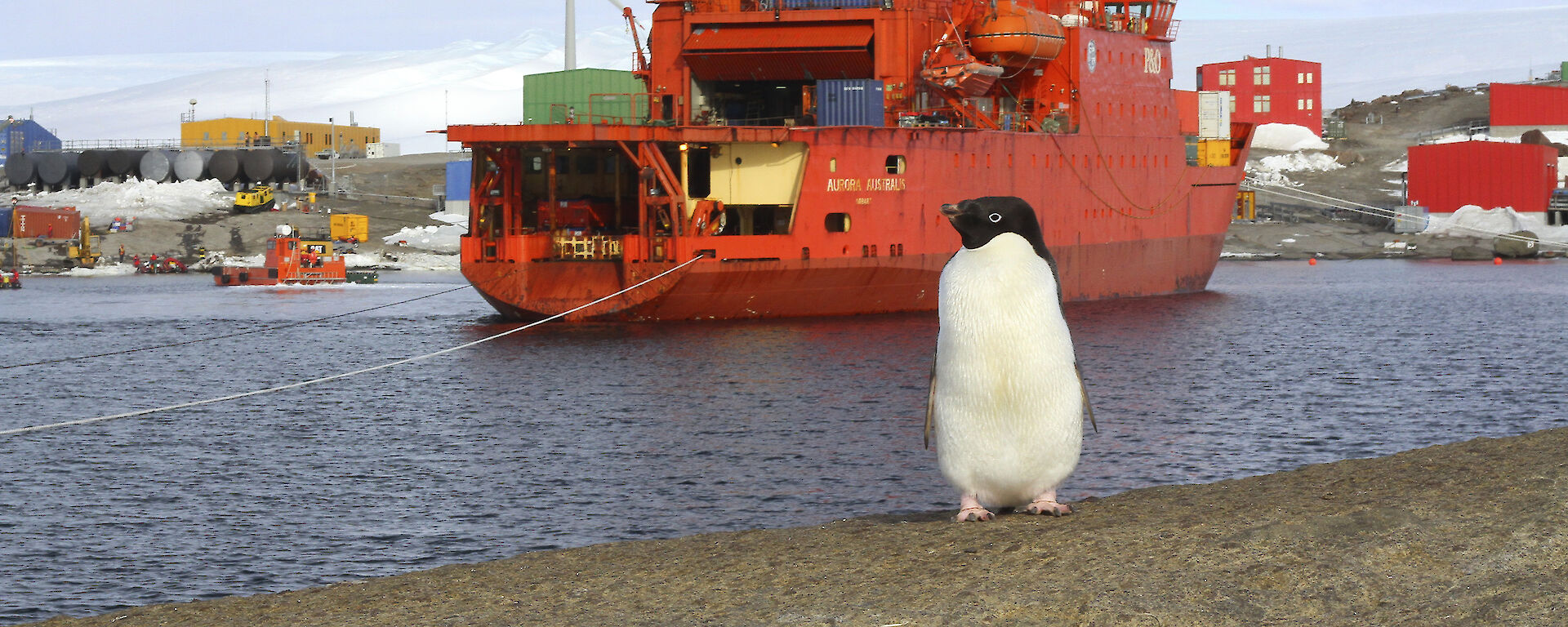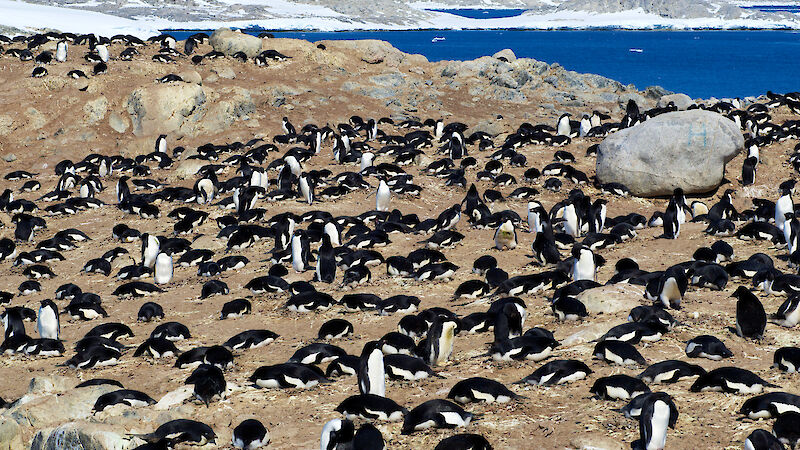The new research*, published in Global Ecology and Conservation by a team of Australian, French and Japanese scientists, used aerial and ground surveys, tagging and resighting data, and automated camera images, over several breeding seasons.
The researchers focused on a 5000km stretch of coastline in East Antarctica, estimating 5.9 million birds and extrapolating that out to a likely global estimate of 14–16 million birds.
Australian Antarctic Division seabird ecologist, Dr Louise Emmerson, said up until now, population estimates only took into account breeding pairs and did not include non-breeding birds.
“Non-breeding birds are harder to count because they are out foraging at sea, rather than nesting in colonies on land,” Dr Emmerson said.
“However, our study in East Antarctica has shown that non-breeding Adélie penguins may be as, or more, abundant than the breeders.
“These birds are an important reservoir of future breeders and estimating their numbers ensures we better understand the entire population’s foraging needs.”
The research has implications for both terrestrial and marine conservation, with more birds potentially interacting with human activities on the continent and in the Southern Ocean than previously thought.
Lead author of the study, seabird ecologist Dr Colin Southwell, said rocky, ice-free areas along the East Antarctic coast are favoured by both Adélie penguins, for nesting sites, and research stations, due to their easy access for resupply.
“There are currently nine permanently occupied research stations in the ice-free areas of East Antarctica and we found over one million birds, or 29% of the population, breed within 10km of a station, and 44% within 20km of a station,” Dr Southwell said.
“Of the 16 Antarctic Specially Protected Areas in the study region, eight contain breeding Adélie penguins, encompassing about 10% of the breeding age population.
“By identifying significant penguin breeding populations near stations we can better identify which areas may need enhanced protection into the future,” Dr Southwell said.
The research also estimates the amount of prey (krill and fish) needed to support the Adélie penguin population.
“An estimated 193 500 tonnes of krill and 18 800 tonnes of fish are eaten during the breeding season by Adélie penguins breeding in East Antarctica,” Dr Emmerson said.
This information will be used by the Commission for the Conservation of Antarctic Marine Living Resources to set sustainable krill fishery catch limits.
When it comes to conservation, every penguin counts.
Nisha Harris and Wendy Pyper
Corporate Communications
*Australian Antarctic Science Projects 2722, 4087 and 4088.



